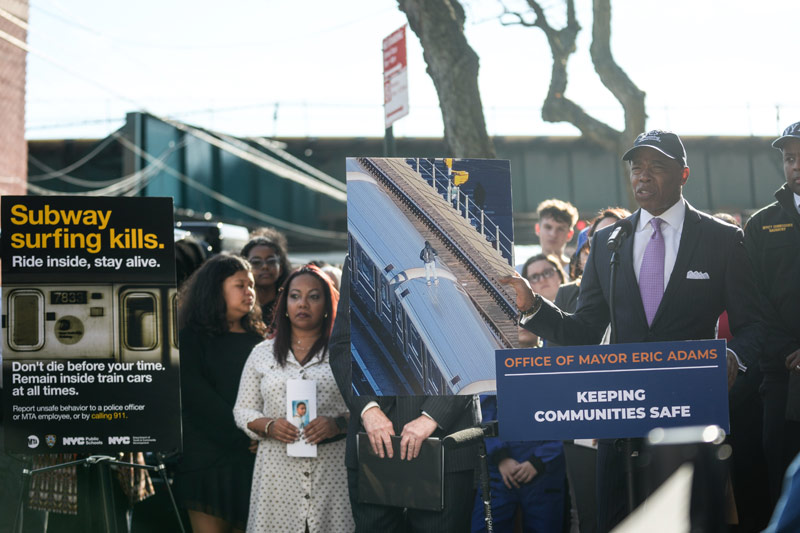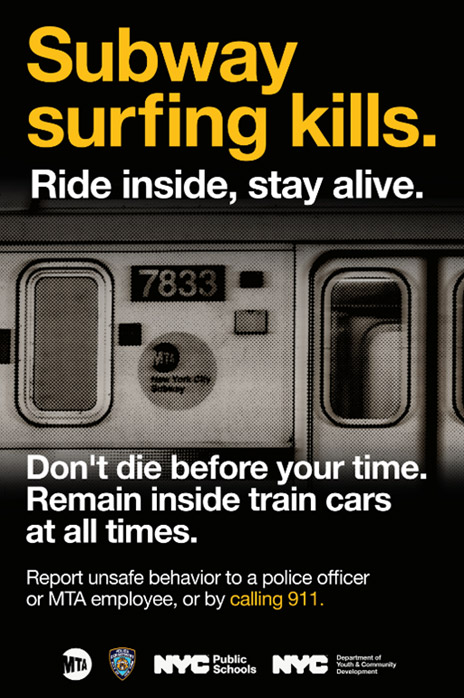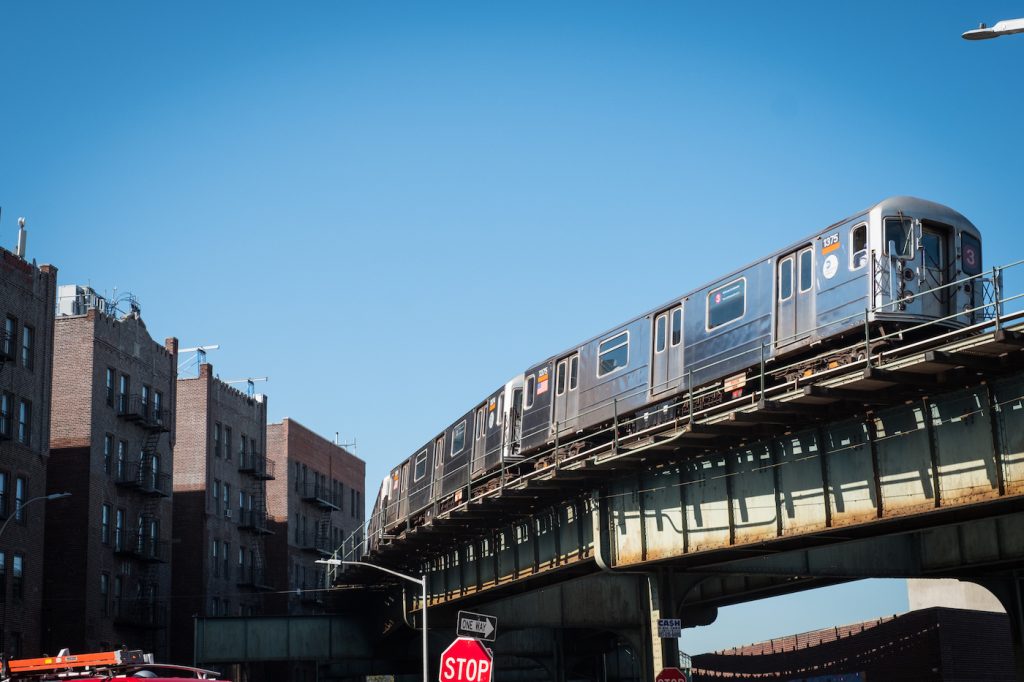
Courtesy NY.GOV
A tragic incident on October 27 claimed the life of 13-year-old Krystel Romero, marking the sixth death from subway surfing in New York City this year.
By MOHAMED FARGHALY
mfarghaly@queensledger.com
A tragic incident on October 27 has brought renewed attention to the perilous trend of subway surfing in New York City. Krystel Romero, a 13-year-old girl, was pronounced dead at the scene after being struck by a train at the 111 Street subway station, marking her as the sixth person to die from this reckless activity this year alone.
The New York Police Department responded to a 911 call regarding the incident, which has added to the growing concern surrounding subway surfing, an act where individuals ride on top of moving trains. This dangerous trend has seen a disturbing increase within the last few years. The current year’s toll underscores an alarming pattern that has caught the attention of city officials and advocates alike.
During a press conference, Janno Lieber, chair and CEO of the Metropolitan Transportation Authority (MTA), issued a stark warning.
“Listen, this is not like a video game. You don’t get another chance; you can’t just reboot,” Lieber said. “This is one chance – if you do something stupid, you’re going to lose your life. Please, parents, teachers, other caregivers, make sure kids understand this is not a game. They cannot take chances with their lives.”
In response to the rising incidents of subway surfing, the MTA has been proactive in implementing measures aimed at curbing this behavior. A campaign titled “Subway Surfing Kills – Ride Inside, Stay Alive” was launched to educate young people about the dangers associated with this reckless act. Shanifah Rieara, senior advisor for communications and policy at the MTA, addressed the ongoing efforts during a media roundtable earlier this year.
Rieara noted that the MTA started a campaign a year ago, using digital messages and voice recordings to warn students about the dangers of subway surfing. While the campaign has been effective, they plan to update it with a new version to further strengthen the safety message. Rieara emphasized the importance of ongoing outreach and collaboration with social media companies.
The city’s commitment to safety extends beyond educational campaigns. Mayor Eric Adams, alongside NYPD Interim Commissioner Thomas G. Donlon and NYC Public Schools Chancellor Melissa Aviles-Ramos, has urged New Yorkers to call 911 if they witness subway surfing. The NYPD is employing data from these calls to deploy joint drone and field response teams to areas with the highest reports of subway surfing incidents.
The deployment of drones in the fight against subway surfing has emerged as a critical tool for enhancing public safety in New York City. Utilizing data from 911 calls, the NYPD has implemented drone surveillance to monitor and respond to incidents of subway surfing in real time. This innovative approach allows officers to identify individuals riding on top of moving trains and intervene before potential tragedies occur. To date, this program has proven effective, helping to save the lives of 114 individuals, with ages ranging from nine to 33 years old and an average age of 14. By combining technology with community engagement, the city aims to curb this dangerous trend and protect its youth from the severe risks associated with subway surfing.
“Subway surfing is a deadly trap, one that is endangering more and more young people who see others doing it on social media,” said Mayor Adams. “But those five minutes of online fame could lead to years of regret and pain, or a lifetime of trauma and heartbreak for a family that loses a child. Think about what riding on top of trains really means: the possibility of death and your family, in grief, wondering what more they could have done to protect you. Subway surfing kills — ride inside, stay alive.”
The city’s ongoing campaign, which launched in September 2023, includes a multifaceted approach involving the NYC Department of Education, the NYPD, and the NYC Department of Youth and Community Development. The initiative has been designed for and by New York City teenagers, putting their voices front and center in a peer-to-peer effort to deter dangerous behavior. The campaign’s messaging has reached all 1,800 New York City Public Schools, with posters and palm cards distributed to schools near the J, M, Z, and 7 train lines, which experience the most complaints regarding subway surfing.

Courtesy NY.GOV
In response, officials are ramping up safety campaigns and using drone surveillance to combat this dangerous trend, urging parents and young people to recognize the life-threatening risks involved.
As part of this comprehensive effort, various materials, including public service announcements recorded by students, digital signage in subway stations, and social media posts, are being utilized to spread awareness. The campaign’s effectiveness is bolstered by partnerships with major tech companies like Meta and Google, which have made space on their platforms to amplify the messaging. The collaboration aims to counteract the viral nature of subway surfing content that has proliferated on social media.
Amid these initiatives, concerns about the role of social media in promoting dangerous behaviors have prompted further action from the city. In February, Mayor Adams announced a lawsuit against several social media companies for their negative impacts on young people, citing subway surfing as a key example. This lawsuit, filed in California Superior Court, seeks to hold companies operating TikTok, Instagram, Facebook, Snapchat, and YouTube accountable for their roles in creating the youth mental health crisis in New York City. The lawsuit alleges that these companies intentionally designed their platforms to manipulate and addict children and teens to their applications.
“Views on social media are not worth losing your precious life. Six young people have tragically died from subway surfing in 2024, including a 13-year-old girl on the 7 train earlier this week. The city must invest in more after school programs that give young people an engaging safe space and an outlet to grow their interests outside of the classroom,” said New York City Councilmember Julie Won. “In 2023, five young people died from subway surfing, and these deaths continue to increase every year. Last year I wrote a letter to the MTA New York City Transit urging them to take immediate action to prevent subway surfing, including locking train doors. As a mother of two young kids, I urge the state to revisit this request to protect our children and prevent future fatalities from subway surfing.”

A subway train passes through the Brownsville neighborhood of Brooklyn on Wednesday, October 18 , 2017. Edwin J. Torres/Mayoral Photography Office.
As the city grapples with this escalating crisis, the loss of young lives continues to serve as a somber reminder of the dangers inherent in subway surfing. With city officials and community leaders rallying to combat this trend, the hope remains that through education, outreach, and active intervention, future tragedies can be prevented, ensuring the safety of New York City’s youth.
“Subway surfing, fueled by social media, has led to innumerable tragedies that have stolen far too many of our young people just entering the prime of their lives,” said Queens Borough President Donovan Richards Jr. “I commend any effort to protect young people by stopping them from engaging in this extraordinarily dangerous trend, and I look forward to working with our partners in education and law enforcement to combat this crisis.”


